Phenomena of

PUBLICATION OF LAPLAND UAS Series D. Other publications 8/2022
Arctic Nature Workbook Tools for Developing Nature-based Tourism Business D
Mervi Angeria – Milla Hirvaskari – Outi Kähkönen – Mirva Tapaninen
Phenomena of Arctic Nature Workbook
Angeria, Mervi – Hirvaskari, Milla – Kähkönen, Outi, Tapaninen Mirva
Phenomena of Arctic Nature Workbook
Tools for Developing Nature-based Tourism Business
Series D. Other publications 8/2022
Lapland University of Applied Sciences Rovaniemi 2022
© Lapland University of Applied Sciences and authors
ISBN 978-952-316-443-7 (Stitched)
ISSN 2342-2521 (Printed publication)
ISBN 978-952-316-444-4 (pdf)
ISSN 2342-253X (Electronic publication)
Publication of Lapland UAS Series D. Other publications 8/2022
Financing: The Project is co-funded by the European Union
Authors: Mervi Angeria, Senior Lecturer, Responsible Business and Services, Lapland University of Applied Sciences
Milla Hirvaskari, Project Manager & Lecturer, Responsible Business and Services, Lapland University of Applied Sciences
Outi Kähkönen, Senior Lecturer, Responsible Business and Services, Lapland University of Applied Sciences
Mirva Tapaninen, Project Manager, Responsible Business and Services, Lapland University of Applied Sciences
Cover and Illustrations: Digi-ja mainostoimisto Höyry Oy, Sini Liikanen
Layout: Videcam Oy, Arto Huhta
Printer: PunaMusta Oy
Lapland University of Applied Sciences Jokiväylä 11 C 96300 Rovaniemi
Tel. +358 798 6000 www.lapinamk.fi/publications
The Lapland University Consortium is a unique form of strategic alliance in Finland, as it comprises a union between University and University of Applied Sciences. www.luc.fi
This work is licenced under a Creative Commons Attribution 4.0 International Licence.
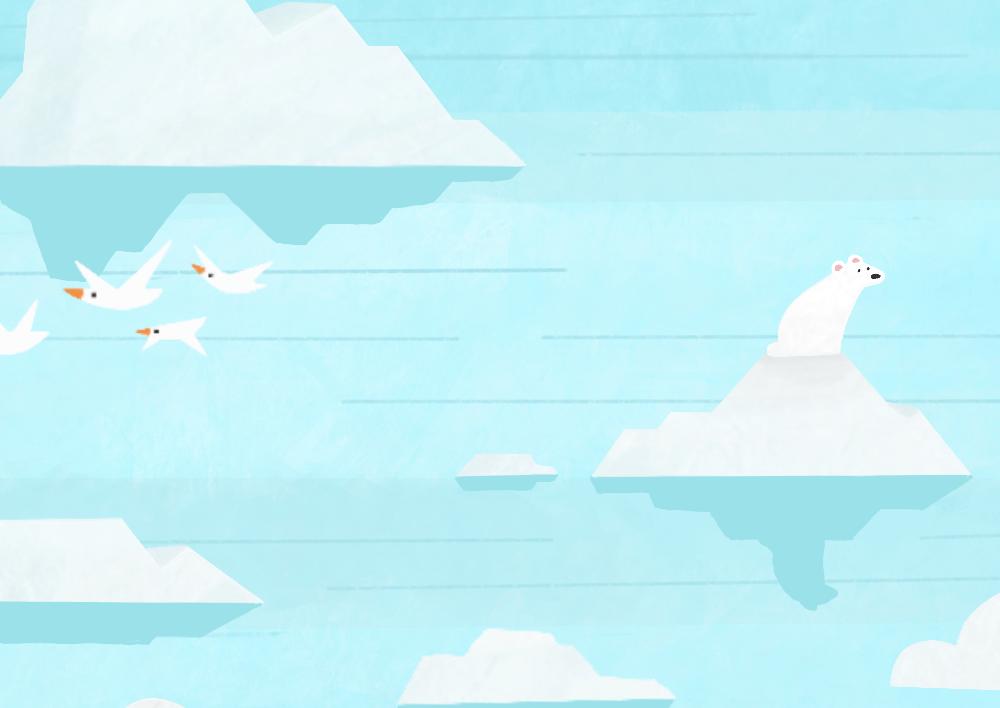
IntroductionThe Phenomena of Arctic Nature workbook provides practical tools and knowledge for planning nature-based tourism concepts. The workbook is based on the PAN online educational material.

A successful tourism product consists of carefully considered details. Once these details have been honed to work as a cohesive entity, one can speak of a concept. Here we discuss concept planning concerning naturebased tourism service products that have been planned according to certain principles, creating an even-quality experience aimed at a carefully defined target customer.
This workbook is for tourism companies, municipalities and stakeholders who are interested in systematic and responsible business development aimed at creating high-quality customer experiences.
This workbook has been produced in the Phenomena of Arctic Nature project (2019–2022) co-funded by the European Union. The contents of this workbook are the sole responsibility of the Lapland University of Applied Sciences and can in no way be taken to reflect the views of the European Union.
HOW TO USE THE WORKBOOK?
The workbook is divided into five chapters and topics. The structure is based on the principles and features of concept planning and responsible nature-based tourism.
Each chapter starts with an introduction. The tasks and tools in each chapter give you the opportunity to consider and develop your business. The fact sheets provide background information about the topics.
Read more about each topic in the Phenomena of Arctic Nature educational material
https://blogi.eoppimispalvelut.fi/phenomenaofarcticnature/.
You can use the workbook one chapter and topic at a time, from beginning to end, or select the chapters and tools that support your business development.
You can use the tools in three ways:
• Fill in the printed workbook.
• Fill in the digital workbook and save / print it out for yourself.
• Study the topic and use these and also other tools in the PAN online educational material.
7
Identity prism | Value proposition Responsibility | Accessibility SWOT analysis | Stakeholder map | Physical evidence Concept Planning Operating Environment Customer persona | Empathy map | Customer journey Customer Insight Service Product | Memorable Experience | Sustainable pricing | Product card Tourism Product Marketing Communication 8 12 16 22 34
Concept planning
Concept planning is comprehensive and systematic business development. The aim is to create concepts for tourism products that offer uniform and comprehensive services and experiences for the customers.

This holistic process includes the analysis and planning of numerous details, such as the product, processes, infrastructure, people, sales, price, accessibility and reputation. It is always based on the company’s goals, values and identity, and so each concept is unique.
A good basis for the concept is the identity. The destination or the company itself defines the identity which directs the brand. The better the identity has been considered in concept planning, the more strongly it comes across in the customer’s experience.
Fill in the company or destination name in the middle and then the 6 fields answering to the questions below.
IDENTITY
Company identity means the company’s image of itself: the company’s basic values, basic assumptions, the company’s posi tion with respect to the environment, business ideas, visions, strategies as well as attitudes towards marketing and competi tion, and stories and myths connected with the company. The company’s visual identity forms the visible part of the identity.
Destination identity means the emotional attachment to a region. It includes all the generally recognizable nature’s and society’s features which make the destination distinctive from others.
The Identity Prism tool can be used to aid these reflections. The identity prism is divided into six parts, three of which tell about the company’s self-image and three about the desired customer image.
1. Personality
» What adjectives describe the brand best?
» What kind of a person would the brand be?
2. Physical features
» What colours, forms, colours does the brand include?
» What are their functions in the brand?
3. Culture of action
» What values describe the brand operations?
» What ideology, ideals does the brand represent?
» What is the brand’s attitude?
4.
Customer’s self-concept
» What is the customer really buying when using our tourism product?
» How should the customer feel like?
5. Customer’s image of the tourism product and its users
» Who are the consumers of our brand according to the brand image?
» Who do we want to represent our brand?
6. Customer relationship
» How do we want the customer to perceive the brand?
» How often, where, when and what for is the brand used?
9

Company or Destination Self concept Desirable customer image 1 Personality 4 Customer relationship 5 Customer’s image of service and its users 6 Customer’s self-concept 2 Physical features 3 Culture of action Figure. Identity prism
Value proposition step by step
What distinguishes your company’s services or products from competitors?
VALUE PROPOSITION
The value proposition describes how your destination or company stands out from the competitors, and what it offers to your customers. This promise aims to benefit the customer by solving a problem or improving the current situation. Customers choose the company that brings them the most value.
Start forming the value proposition with the help of these questions:
1. What distinguishes your company’s services or products from the competitors’ offering? The value proposition can be related to authenticity, locality, sustainability or even storytelling.
2. What problem does your company’s service or product solve?
Each customer group must have its own combination of company services and products.
3. What benefits does your company offer to customers?
Benefits can be innovative or, for example, promises of sustainability.

4. How does your story support the value proposition?
When you create a story around your company’s value proposition, custom ers focus on it. A story makes it possible to stand out from the competition. An emotional story enhances customer loyalty.
5. What is your value proposition to different customer groups?
Different customer groups, e.g. couples travelling without children or families with children, have different needs and expectations. Therefore, you should tailor value propositions appropriately for different customer groups.
What problem does your company’s service or products solve?
What benefits does your company offer to customers?
How does your company story support the valuea proposition?
What is your value proposition to different customer groups?
Source: LappiLuxus workbook
11
Operating Enviroment
The business operating environment is an environment and network where the business operates. It consists of external factors which affect the company from the outside, such as climate change, global economy or political decisions, and internal factors over which the organization has more control, such as employees, products and location.
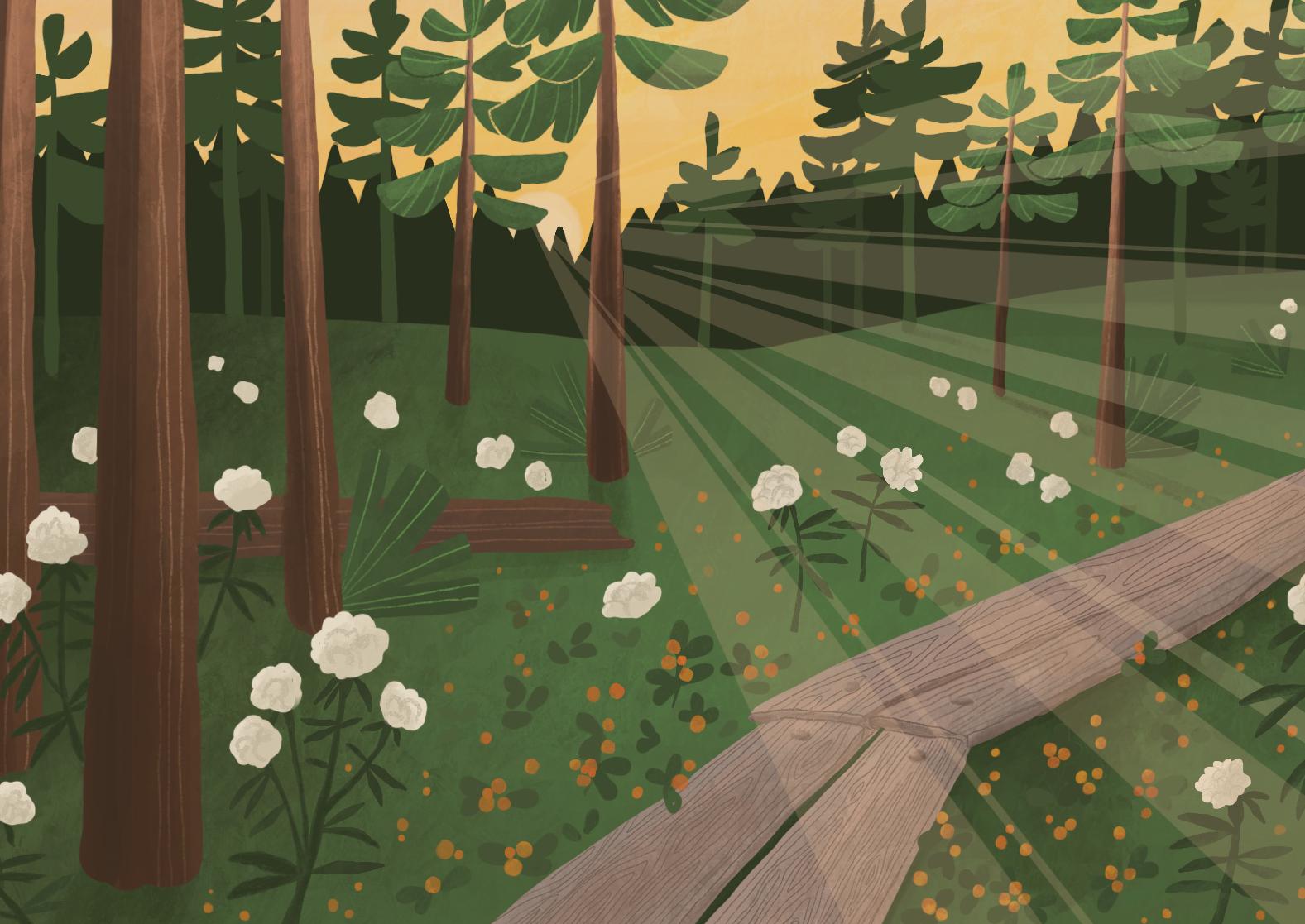
SWOT ANALYSIS
The SWOT analysis is a situational analysis and assessment tool that helps you to identify the internal and exter nal factors and the strengths, weak nesses, opportunities and threats in volved in the business operating envi ronment.
INTERNAL FACTORS
STRENGTHS
What are our success factors?
What are our unique resources?
What do others see as our strengths?
WEAKNESSES
What could we do better?
Where do we have fewer resources than others?
What are others likely to see as weaknesses?
EXTERNAL FACTORS
Fill in the SWOT analysis of your company or destination.
OPPORTUNITIES
What opportunities are open to us?
What trends could we take advantage of?
How can we use our strength to take advantage of opportunities?
THREATS
What threats could harm us?
What is our competition doing?
What threats do our weaknesses expose us to?
13
NETWORKING
Networking is crucial in managing the operating environment. A functioning network consists of a wide range of stakeholders who participate and co-operate actively. It is goal-orientated and conscious co-operation based on willingness, trust, transparency and roles, and it creates value for all the participants.
The stakeholder map helps you to identify the stakeholders and potential cooperative partners. Name the most important primary, internal and external stakeholder groups. Ponder who could be a desirable or new cooperative partner in the future (for example in purchases, subcontracting, product development, marketing).
Do not forget your competitors nor public-private partnerships typical of nature-based tourism.
14
Primary
Internal
External
Desirable or new cooperative partners
Identify and assess physical evidence in your nature-based tourism business with the help of these questions:
PHYSICAL EVIDENCE
The physical evidence includes the environment in which the service is delivered and where the company and the customer interact. This multisensory service scape–the physical environment where the service takes place–facilitates ser vice delivery, provides information, attracts, differentiates and influences expec tations. For a nature-based tourism business, nature is a primary object of tourist consumption and a setting where this consumption happens.
• What are the fundamental natural resources (such as sights, places, environments, attractions, phenomena)?
• Who has control over them?
• How do the facilities (such as interior design, signage, parking, equipment, surrounding environment) support the performance or communication about the service?
• How does the servicescape appeal to different senses (sight, sound, scent, touch, and taste appeals)?
• How are the aesthetic experiential qualities (such as naturalness, cleanliness, peacefulness, harmony, genuineness, viewing scenery and wildlife, architecture) fulfilled?
• How is the servicescape illustrated and reviewed on social media?
• Does the servicescape convey a consistent message of your service?
The physical operating environment in nature-based tourism includes
• protected areas such as national parks, nature reserves, nature resorts
• and monuments, wilderness and hiking areas
• nature environments such as forests, water areas, mires, mountains, countryside
• phenomena of Arctic nature such as the northern lights, midnight sun, autumn leaf colors, snow and ice.
15
Customer insight
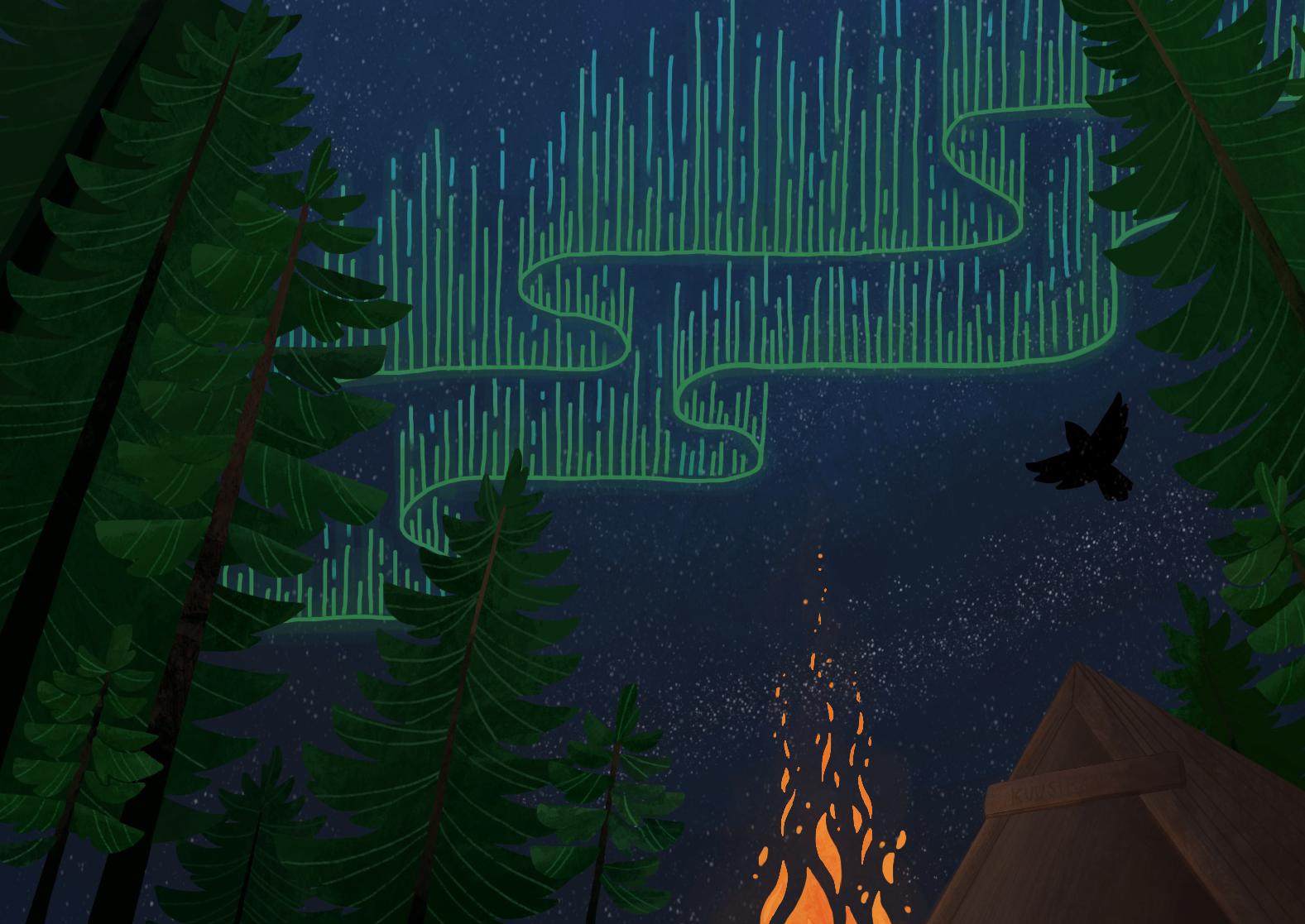
Customer orientation means that the service is specifically created to meet the customer’s needs.
The service solves the customer’s problem and offers an answer to their wishes. Therefore, you need to know who your customers are, what they need and want. Guest centricity, customer focus and customer relationship management are crucial in delivering tourism experiences.
To match the offer with the demand, a profound understanding of the customers is needed.
CUSTOMER PERSONA
The customer persona represents a group of users who share com mon goals, attitudes and behav iours. They are usually not actual people but synthesized directly from observations of real people. The persona is created on the basis of data acquired from various sources, ideally co-created together with the customers. Use the de scription of your target customer segment as a basis. Customer per sonas helps to focus, empathize, find consensus and be efficient. The customer persona template is a tool for describing your typical customer. It gives better insight into the factors that need to be consid ered when planning the service. With
17
permission,
translated from http://www.palma.fi/palma-malli/kayttajalahtoisyys/Asiakaspersoona.pdf
and
customer
PERSONA Background information Name Age Profession Domicile Family Hobbies Dreams about... Persona Gets frustrated by... Values as a traveller... Uses these channels introvert extrovert analytical creative passive active messy organized innovator laggard Motivators Traveller type active take it easy social loves peace executes relaxes plans lives in the moment skillfull in wilderness lacks wilderness skills Safe destination Ecological destination Trendy destination Price level Additional services Restaurant services Landscapes Authentic destination Cultural environment New acquaintances Description of a typical customer. With the customer persona, you can step into the customer's shoes. This gives better insight into the factors that need to be considered when planning the service. It is based on observation and authentic customer experiences acquired through interviews.
Step into your customer’s shoes
ponder the
persona with the help of the customer persona template. CUSTOMER
EMPATHY MAP
Empathy means understanding and accepting the experiences of another. It requires genuine interest, care and concern.
“Empathy is seeing with the eyes of another, listening with the ears of another, and feeling with the heart of another.” - Alfred Adler
To gain better customer understanding, an easy tool to use is empathy mapping. It helps you to learn to understand your customer better and find possible pain points in the service from the customer’s viewpoint.
The empathy map is a visual tool to analyse the information acquired from customer profiles or observation.
Empathy map tool
Select a service situation and customer profiles that you want to analyse. Step into your customer’s shoes and ponder the customer’s values and service experience with the help of an empathy map.
18
EMPATHY MAP
Learn to understand your customer better and find possible pain points in the service from the customer's viewpoint.
TASK
Step into your customer's shoes. What are the customer's values, what interests them, what is their relationship with the service under development?
• What does the customer do? What do they say? How to they act and react in the service situation? What is their attitude concerning the service? What do they tell others about it?
• What does the customer see? Describe the service situation and environment. Are they any challenges? What is their attitude towards the service environment?
• What does the customer feel and think? What do they feel in the service situation? What is important for them? What inner motives and thoughts steer their actions in the service situation?
• What does the customer hear? Which external factors affect their performance and attitude? Do comments from others have an effect? How?
• What does the customer fear? (fears, problems, inhibitions)
What are the paint points of the service from the customer's viewpoint? What things worry the customer in the service situation? What paint points does the customer have?
• What does the customer hope? (hopes, desires, needs) What brings joy to the customer? What successes does the customer expect from the service?
TIPS FOR THE EXERCISE
• Stick to the customer's role. Consider the service critically, empathize with the customer's experiences and needs.
• Think about the concrete service experience and environment. In what kind of space does the service take place? What kind of external and internal factors affect the experience?
• Remember to observe the customer experience holistically; before, during and after. jälkeen.
The empathy map helps you to see the existing service through the customers' eyes. and to ponder the customers' values and service experience. It helps in recognizing the customers' feelings, needs, thoughts and fears connected with service development.
What does the customer think and feel?
What fears and obstacles are there?
What does the customer say and do?
What does the customer hope for?
With permission, translated from http://www.palma.fi/palma-malli/kayttajalahtoisyys/Empatiakartta.pdf
List
IDEAS AND SUGGESTIONS
19
What does the customer see?
What does the customer hear?
concrete ways to improve the customer's service experience.
BEFORE
CUSTOMER JOURNEY
The customer journey describes the process that the customer goes through when interacting with your company. It can be divided into the phases before, during and after the trip, and fur ther into service moments (such as booking) and touchpoints. A touchpoint is where the (potential) customer comes into con tact with your product, brand, business or service.
The customer journey map helps you to better understand the needs of your customers, where opportunities lie so that your offerings can be aligned with those needs, and what you need to do to deliver those offerings.
How does the customer contact your company?
Target group: Who is in contact with your company? Who is your customer? POSITIVE NEGATIVE Service / product
PLANNING BOOKING ARRIVAL START
Describe how the customer finds out about the company. (marketing, sales channels)
Describe the target group. Traveller and/or some other end user, tour organizer or travel agency and the local cooperative partner / subcontractor.
Describe how the service / product is booked / ordered.
Describe the target group. Traveller and/or some other end user, tour organizer or travel agency and the local cooperative partner / subcontractor.
Describe how the customer arrives. Describe who comes
Describe where the action starts. Describe who starts.
Document all the positive issues on each of the actions concerning the product / service.
Document all the positive issues on each of the actions concerning the product / service.
Document all the negative issues on each of the actions concerning the product / service.
Describe what actions are needed for ordering or booking.
Document all the negative issues on each of the actions concerning the product / service.
Describe what actions are needed for ordering or booking.
Describe what actions are needed for using the service or product. Describe who are the actors.
Describe where Describe needed product.
Describe what actions are needed from external service providers or product suppliers for ordering or booking.
Describe what actions are needed from external service providers or product suppliers for ordering or booking.
Describe what actions are needed from external service providers ór product suppliers.
20
CUSTOMER
INVISIBLE TO THE CUSTOMER SAFETY
CUSTOMER JOURNEY VISIBLE TO THE CUSTOMER
EXPERIENCE
Support functions Safety issues
Adapted from Tourism ABC >
PRODUCT/SERVICE
ARRIVAL START ENVIRONMENT ACTIVITY/SERVICE
Describe how the customer arrives.
Describe who comes
Describe where the action starts. Describe who starts.
Describe the environment where the service or product takes place.
Describe who does what.
Describe how the customer uses the product. What actions are there?
COMPONENTS/ EXPERTS END SHARING/ REMEMBERING
Describe what actions are needed for using the service or product. Describe who are the actors.
Describe who does what.
Describe what components or experts are connected with the service or product. Describe who does what.
Describe where the action ends. Describe who ends.
Describe the channels for receiving feedback. Describe who gives feedback.
Choose
Describe what actions are needed from external service providers ór product suppliers.
Describe what actions are needed for using the service or product. Describe who are the actors.
Describe what actions are needed to handle the feedback.
Describe what actions are needed from external service providers or product suppliers.
If possible, involve your customers and staff in this.
21
a customer persona you have created and map the customer journey for that persona.
DURING THE TRIP AFTER
Tourism product
Tourism products generally consist of several services offered by different service providers along the customer journey.

SERVICE PRODUCT
The core of the tourism product, the service concept, describes what kind of value the customer expects. Did you already define your company’s value proposition? For example, the concept could be “an exclusive adventure experience to exceed one’s limits and indulge oneself in location X”. Remember that value is always the subjective experience of your customer.
The service process includes the different service modules along the customer journey. Each service module can be priced and sold separately. The service system includes the resources needed to realize the service concept.
Describe an existing or potential tourism product. Your company might offer only one or some of the service modules. Try to fill in the other modules as well along the customer journey. Use the Customer-oriented Tourism Product Model for ideas (adapted from Komppula & Boxberg 2002).
23
SERVICE CONCEPT & CUSTOMER VALUE SERVICE SYSTEM SERVICE PROCESS service modules Hospitality Competencies Brand / Image Co-operation Standard of service Place Physical surroundings hswonSieo n g • F is hing • Snowmobiling• Hiking • Skiing •Visitingattracti ons • R e reedni sirafas dommoccA a t ion • Localfoodservices • Storytelling• Snow & eci secivres Business idea, interests and strategies Traditions, stories Water areas Nature and aesthetics Wildernerss Trails, slopes Built environment infastructure
Service Concept and Customer Value Service Process – Service Modules Service System
Absorption
MEMORABLE EXPERIENCE
Today’s tourists value memorable experiences that are created through immersing oneself in the destination, interacting with people, engaging the senses, and learning the stories.
The four realms of an experience (Pine & Gilmore 1998) help you to think of the customer’s role in the experience offered. How do your visitors participate in the experience? Ideally, a memorable experience includes all four realms.
In nature-based tourism, visitors consume places, such as a national park (commodity). Bike hire makes the place accessible (product). Provide a biking tour that shows the national park to the visitor, and you have a tourism ser vice. But when you connect the biking to the unique time of the midnight sun, teach your visitors to pick blueber ries, find spring water, build a fire and bake blueberry pancakes, you have probably created a memorable experi ence unlike anything else. It might even transform the visitor, leading to self-assessment and development of news skills and beliefs, for example.
Environmental education is a practical field of education that aims a sustainable way of living and environmental sensitivity, familiarity and optimism.
The customer watches the activities and/or performances of others.
How can you make the experience more fun and entertaining?
The customer’s mind and/or body are actively engaged in enhancing skills of knowledge.
What do you want customers to learn from the experience?
Entertainment Educational Esthetics
The customer enjoys passively appreciating or just being in the setting.
How is the experience enriched by the surroundings?
The customer actively shapes or contributes to the experience to escape to a different time or place.
What should your guests do?
How can you make them active participants in the experience?
Immersion
24
Sweet spot: The richest experiences encompass aspects of all four realms.
Escapist
experience occupies customer’s attention
customer becomes physically or virtually part of the experience itself
Customer’s passive participation in the experience
Customer’s active participation in creating the experience
Figure. Four Realms of an Experience (adapted from Pine & Gilmore 1998)





25 Undifferentiated Greater differentiation Higher yield Lower yield Price Commodity National Park Product Bike hire Service Guided bike tour Transformation Appreciation of nature skills Experience Midnight-sun biking and baking in wilderness Figure. Progression of Economic Value (adapted from Pine & Gilmore 1998)
26 DNA structure Core experience Story Narration Memorabilia Environment Sensescape Emotions Goals and objectives Customer – values and expectations Other stakeholders Atmosphere MEMORABLE EXPERIENCE DESIGN CANVAS Adapted from https://eventandexperience.wordpress.com /2018/01/10/experience-design-canvas/
MEMORABLE EXPERIENCE DESIGN CANVAS
Create a concept for a memorable tourism experience or analyse an existing tourism product with the Memorable Experience Design Canvas.
DNA structure
• Describe
» your company vision, values, objectives
» your value proposition
» your destination’s image
» How does the experience connect to them? How do you want to be seen?
Company goals and objectives
• What results do you want from your experience (attract a new visitor segment, extend season, higher yield per guest)?
Core experience
• What makes this experience unique?
• Is it authentic and credible?
• How is the customer immersed in the experience?
• What esthetic, entertainment, escapist, educational elements does it include?
• Have you ensured that basic needs (physiological, safety, belongingness) are fulfilled?
Story
A credible and authentic story adds social significance and content to the pro duct, giving the customer a good reason to experience it. The story justifies what is done and in which order.
• What is the theme?
• What is the storyline, common thread within the memorable experience?
• Tweak the story to suit your target groups.
Narration
• How do you tell the story before /during / after the experience?
• Does it involve and immerse the visitor?
• Is the story supported by other businesses and the destination?
Memorabilia
• What tangible memory (souvenir) will the customer get or even make?
• Environment
• Where will the experience take place?
• Are the infrastructure and equipment of high standard?
• Are there any hidden gems?
Atmosphere
• Does the atmosphere match the tourism product, values?
• Analyse the atmosphere of the setting.
• What positive cues are there (that improve the atmosphere)?
• Can you eliminate any negative cues?
27
Sensescape
• What will your customer » see » hear » smell » taste » touch?
• Can you connect stories to them?
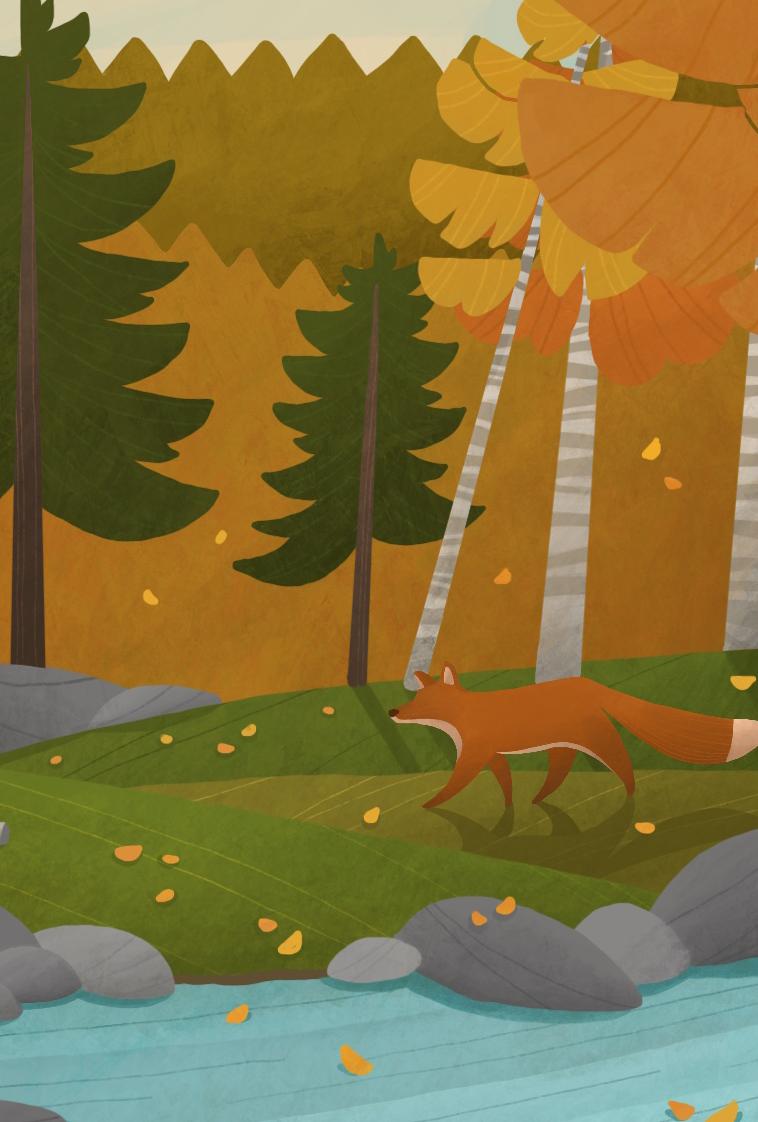
Emotions
• Touch the target group in its values and norms. The sum of emotions gives an experience.
• How do you want your customers to feel?
• What is the WOW factor?
Other stakeholders
• Who else is involved in creating the memorable experience? (staff, cooperative partners, locals)
• How are they interacting with the customer, co-creating value?
• Do you agree on what world-class hospitality with a local twist is for you?
Remember to test the memorable experience using the empathy map!
28
SUSTAINABLE PRICING
Price is the only marketing tool that results in cash flow. Your offerings must be priced consistently, accurately and competitively to cover the costs of your busi ness, make a profit and secure the resources to develop your business. The price must be profitable not only for your company, but for your cooperative partners and intermediaries. The customer should pay the same price, irrespective of the purchase channel.
Pricing is a complex, demanding process involving numerous aspects to consider. The topics below give you an idea of its complexity, but it is not an exhaustive list.
CUSTOMER /customer relationship related elements
Describe different customer groups and consumer behaviour. **
Who are your target customers and how do they affect pricing?
Do you offer different prices to different visitor segments (e.g. seniors, children)?
Describe the stakeholders in the process are. (Co-operative partners, subcontractors, intermediaries such as tourism operators, incentive houses)
Write down notes on the factors affecting the pricing of your tourism product.
COMPANY related elements
What is your business model, earnings logic?
What COSTS* incur from bringing your tourism product to market?
Describe the service production processes (own production vs. subcontracting).
Do you sell products, services or memorable experiences?
Single tourism products or product packages?
What is the brand image of the product / company / destination?
* Fixed costs occur regardless of the sales volume. Rent, interest expenses and property taxes are examples of fixed costs. It difficult to allocate them in single products, but they should be included in the pricing.
Variable costs vary according to volume. Remember also commissions, han dling fees and other distribution costs, taxes. Some expenses, such as utilities and salaries, have both a fixed and variable component.
** FIT (free independent travellers), leisure groups pay themselves. For incentive groups, somebody else pays.
Customer value = what a product or service is worth to a customer compared to possible alternatives.
The price of your product should reflect the assumptions you make about your ideal visitor. Some visitors identify price as an important indicator of quality; i.e., “you get what you pay for.”
29
OPERATING ENVIRONMENT related elements
Describe the changes in the operating environment locally, regionally, nationally and globally: demand/number of customers, competition***, cost and price development of resources, seasonal rates****, legislation.
*** Competition influences the maximum price for which a product can be sold. You might be able to charge a premium price for new or unique offerings espe cially if they are difficult for competitors to imitate. Competing with price eats profitability. Invest in customer value, service quality, differentiation and unique ness instead.
**** Dynamic pricing means that higher prices are charged during the peak sea son, or during special-event periods. In the off-season, only the operating costs of the establishment might be covered.
Practise
Map the price for a sample nature experience with this FIT product pricing template: bit.ly/PANpricetemplate
30
PRODUCT CARD
The whole service process (tourism product bundle) or single activities can be described in a product card. The internal product card serves as a product manu al for the staff, stakeholders and partners, and the external product card is part of marketing communications aimed at resellers and end-customers. Notice that datahubs and distribution channels each have their own product card instruc tions. Write down information needed in an external product card with the help of the given tips. Company
Name of tourism product should include (when applicable)
Theme and type of activity + Location + Duration + Level of difficulty +Whether it is a self-guided or guided activity.
TIPS: Clear, attractive and short (on websites, not more than 60 char acters)
31
Use the same visual elements as the company website: logos, fonts and colours
name and logo
Content
Visual content
What is your unique selling point? Describe the appeal of your region / landscape setting to the chosen activity. Do not just tell what is done. Focus on emotions, benefits of participating, unique experiences (also sensory) that appeal to your target market. Give specific examples of what is done. Don’t forget stories, culture, localness.What other issues are important to your customers, such as sustainability, safety, quality criteria? Testimonials — include one or two of your best customer comments.
TIPS: use simple and short sentences, address the reader. Use key words (words that people would use in search engines when looking for information on products of this kind). Use professionals for the translation.
TIPS: Use high-quality photos of the tourism product. Show details from activities and nature, happy people in activities, impressive land scapes. If the product card includes several photos, they should all tell the same story.
32
Customers Who are your key customers? Minimum and maximum number of customers Service language/s
Activity
level of difficulty, locations, conditions, stages of the trip, endurance, technical skills, equipment duration, time (opening hours) availability (season) restrictions (e.g. weather conditions, accessibility) reservations when at the latest information on insurance cover and recommended insurance
Price / person (with VAT / gross price) adult / child / special groups discounts (early bird / group prices) supplementary services (such as lunch xx € / person)
33
Contact information telephone, email, address, link to company website driving instructions
Marketing Communication
Marketing communication creates and distributes valuable, relevant, and consistent content to attract and retain a clearly defined audience. Marketing is part of creating memorable experiences. It is also a central part of the responsible and sustainable tourism policy.
Communication and marketing are involved in all stages of the customer journey (before, during and after the trip) through different channels, such as websites, reservation systems, distribution channels, social media and customer service, that reach the target audience.
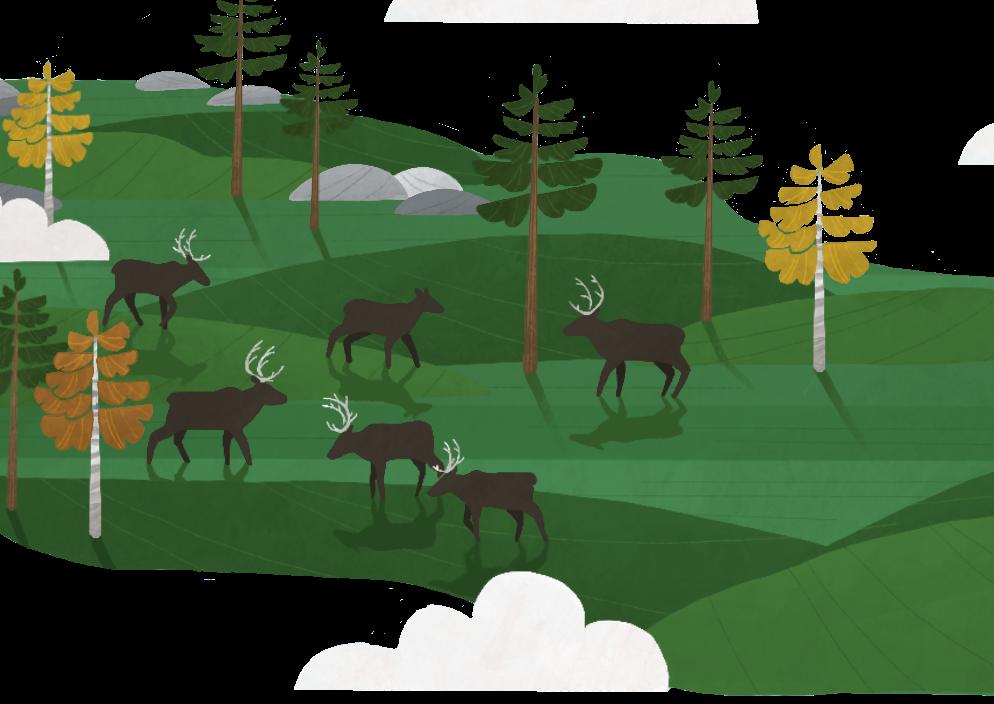
SUSTAINABILITY COMMUNICATION
Sustainability communication is a way for tourism businesses to tell what they are doing in terms of sustainable development and responsibility. In addition, it guides consumers towards more sustainable and safe consumption and travel.
Google further reading
Tools for Sustainability and Communication Tips for Sustainability Communications
Identify and plan sustainability communication with the help of these questions:
Who do you tell?
What motivates your customers towards more sustainable and safe consumption and travel? (benefit to planet and society, benefit to self)
Why do you tell?
Make customers feel good about their choices.
Raise awareness and change behaviour.
To sell more, still responsibly.
What do you tell?
What are your commitments and goals as well as actions for sustainable develop ment (not just environmental, but also economic, socio-cultural and ethical)?
What kind of practical examples and showcases can you provide? Awards, certifications?
How do you tell?
Is your marketing communication accessible and simple to use and does it follow the data protection, privacy and copyright regulations?
How do you make a personal connection and show that you care?
Can you make sustainability entertaining and participatory to create meaningful memories?
Where do you tell?
Which (multiple) channels are used (website, social media, promotional leaflets, product cards, PR, adverts, bedroom pack, reception, etc.)?
When do you tell?
In all stages of the customer journey
Why customers should buy from you. How your customers should prepare for their visit.
On location you prove it was not just greenwashing. Are there any negative cues? Tell what effect the customer’s choices have had.
35
Identify and plan responsible marketing communication in nature-based tourism:
Before the trip (=inspiring, marketing informing, selling)
How can you inspire and motivate the potential customers (e.g. with travel stories, photos, interesting content and advertisements, dialogue)?
Do you provide useful and reliable information (e.g. product and route descriptions, requirements, suitability, prices, etc.) about the destination/service?
Do all communications use the brand style and tell the same brand story?
Do the photos and videos reflect your values, show realistic and responsible action and promote good feeling?
Is your online content accessible and simple to find and use to everyone (e.g. language versions, various modes of presentation, various channels, universal design)?
Can your offering be easily booked and paid online? Do you quickly respond to requests?
How do you collect and process the personal information? Have the copyright issues been taken care of?
During the trip (= creating experiences, customer service)
Do you provide necessary information and additional services (e.g. routes, maps, signage, reports on weather conditions and exceptional situations, equipment)?
How can you create positive feelings and customer experiences?
Tips:
After the trip (=retaining)
How can you engage your customers and create positive feelings towards your company (e.g. ask for reviews and feedback, to share experiences on social media, delight with memorabilia)?
use the customer persona and empathy map tools for observing and analyzing the marketing communication
36
37
38
39
The Phenomena of Arctic Nature workbook provides practical tools and knowledge for planning nature-based tourism concepts. The workbook is for tourism companies, municipalities and stakeholders who are interested in systematic and responsible business development aimed at creating high-quality customer experiences.
You can study these topics further in Phenomena of Arctic Nature online educational materials https://blogi.eoppimispalvelut.fi/phenomenaofarcticnature.
The workbook has been created as part of Phenomena of Arctic Nature project. The project is implemented during 2019–2022, and it is co-funded by the European Union. The contents of this publication are the sole responsibility of the Lapland University of Applied Sciences and can in no way be taken to reflect the views of the European Union.

www.lapinamk.fi ISBN 978-952-316-444-4


















